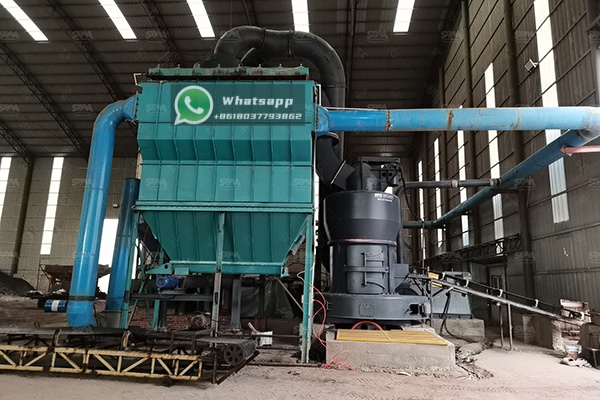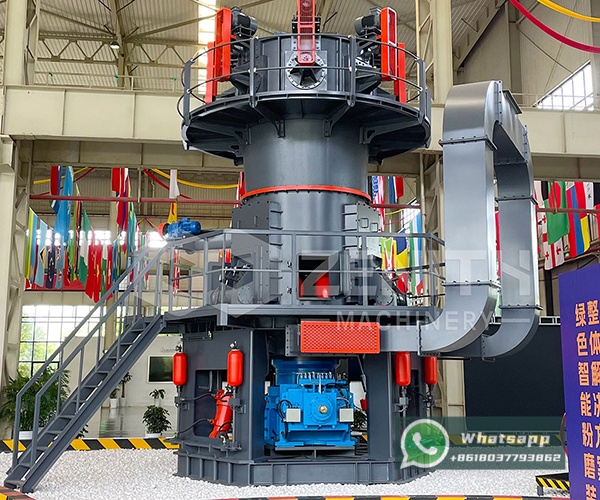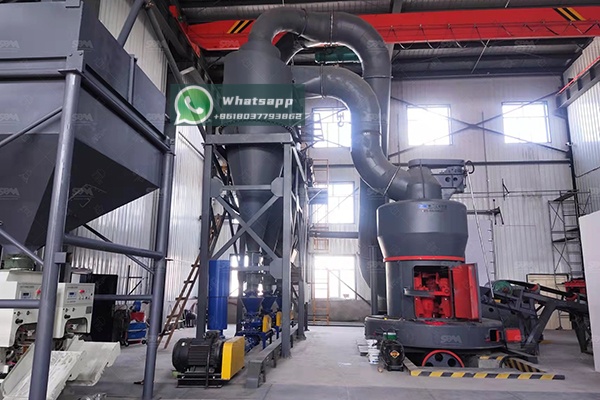The Cellular Lightweight Concrete (CLC) industry has experienced significant growth in recent years, driven by the global demand for sustainable, energy-efficient, and cost-effective building materials. CLC, also known as foam concrete, is a versatile material characterized by its low density and excellent thermal insulation properties. A critical factor in producing high-quality CLC is the use of finely ground raw materials, with fly ash being one of the most important components. The processing of fly ash to achieve the desired fineness and reactivity is paramount, and this is where advanced grinding technology plays a pivotal role. This article explores the necessity of using vertical mills for fly ash grinding within the CLC industry and highlights the technological solutions offered by industry leaders like Shanghai Zenith Machinery Co., Ltd.
Fly ash, a by-product of coal combustion in thermal power plants, is a pozzolanic material. When used in CLC, it contributes to several key properties:
However, the inherent benefits of fly ash are maximized only when it is ground to a specific fineness. Coarse fly ash particles react slowly and inefficiently. Ultra-fine grinding increases the surface area, accelerating the pozzolanic reaction and significantly improving the early and final strength of the CLC.

Traditional grinding systems like ball mills have been used for decades, but they are increasingly being replaced by more efficient vertical roller mills (VRMs) for processing materials like fly ash. The advantages of a vertical mill are particularly pronounced in the CLC industry:
Vertical mills operate on the principle of bed comminution, where the material is ground between a rotating table and rollers. This method is far more energy-efficient than the impact and attrition action in a ball mill, where a significant amount of energy is wasted on rotating the entire drum and the grinding media. For fly ash grinding, which aims for ultra-fine products, VRMs can reduce energy consumption by 30% to 50% compared to ball mills.
Fly ash often comes with a certain moisture content. Vertical mills are designed with an integrated hot air system that can simultaneously dry and grind the material. This eliminates the need for a separate dryer, simplifying the process flow, reducing capital investment, and saving space—a crucial consideration for many production plants.
VRMs feature an internal dynamic classifier that allows for precise control over the particle size distribution (PSD) of the final product. A narrow and consistent PSD is essential for CLC, as it ensures uniform reactivity and predictable setting times. The ability to produce a product with a high Blaine fineness (e.g., over 450 m²/kg) is a standard capability of modern vertical mills.
The vertical configuration of the mill results in a smaller footprint compared to the horizontal layout of a ball mill plant. Furthermore, the grinding process in a VRM is quieter, contributing to a better working environment.

As a leading manufacturer in the field of industrial grinding equipment, Shanghai Zenith Machinery Co., Ltd. has developed a range of mills perfectly suited for the demands of the CLC industry. Among them, the LM Vertical Grinding Mill stands out as an exemplary solution for processing fly ash.
The LM Vertical Grinding Mill integrates five functions—crushing, grinding, powder selection, drying, and material conveying—into a single, cohesive unit. This integrated approach is ideal for fly ash, ensuring a seamless process from raw material feeding to the collection of the final ultra-fine powder. Its advanced technology offers a small occupational area, produces a fine and consistent final powder, and represents an eco-friendly production solution with low dust and noise emissions.
For CLC producers looking to achieve the highest quality standards, the following technical parameters of the LM Vertical Grinding Mill series demonstrate its capability:
| Model | Plate Diameter (mm) | Capacity (t/h) | Output Fineness (μm) | Max Feed Size (mm) | Main Motor (kW) |
|---|---|---|---|---|---|
| LM130K | 1300 | 10-28 | 170-40 | <38 | 200 |
| LM190K | 1900 | 23-68 | 170-40 | <45 | 500 |
| LM280K | 2800 | 50-170 | 170-45 | <50 | 1250 |
For applications requiring even finer powder, Shanghai Zenith’s LUM Ultrafine Vertical Mill is the equipment of choice. It builds upon the LM series’ foundation with enhanced grinding elements and a more sophisticated classifying system, capable of achieving product fineness up to D97=5μm. This is particularly beneficial for producing highly reactive fly ash that can significantly reduce the cement requirement in high-strength CLC mixes.
| Model | Main Machine Power (kW) | Capacity (t/h) | Size Distribution D97 (μm) |
|---|---|---|---|
| LUM1525 | 220-250 | 1.6-11.5 | 5-30 |
| LUM1632 | 280-315 | 2.0-13.5 | 5-30 |
| LUM1836 | 355-400 | 2.3-15 | 5-30 |
Implementing a Zenith LM or LUM Vertical Mill in a CLC production line translates into direct operational and economic advantages. The low energy consumption directly reduces the cost per ton of ground fly ash. The mill’s high reliability and low wear rate, thanks to its robust construction and use of high-quality materials, minimize maintenance downtime and operational costs. The production of a consistent, high-quality fly ash powder leads to more stable CLC production, fewer rejects, and a superior end-product that commands a better market price. By turning industrial waste (fly ash) into a valuable resource, CLC manufacturers also contribute to a circular economy, often qualifying for green certifications and incentives.

The pursuit of excellence in the Cellular Lightweight Concrete industry is intrinsically linked to the quality of its raw materials. Fly ash, when processed to an optimal fineness, becomes a powerhouse ingredient that enhances strength, sustainability, and economy. The vertical roller mill, with its unparalleled efficiency, integrated functionality, and precise control, has established itself as the cornerstone technology for fly ash preparation. Shanghai Zenith Machinery Co., Ltd., with its profound expertise and innovative product range like the LM Vertical Grinding Mill and LUM Ultrafine Vertical Mill, provides the ideal technological partnership for CLC producers aiming to optimize their processes, improve their product quality, and strengthen their competitive edge in the global construction market.